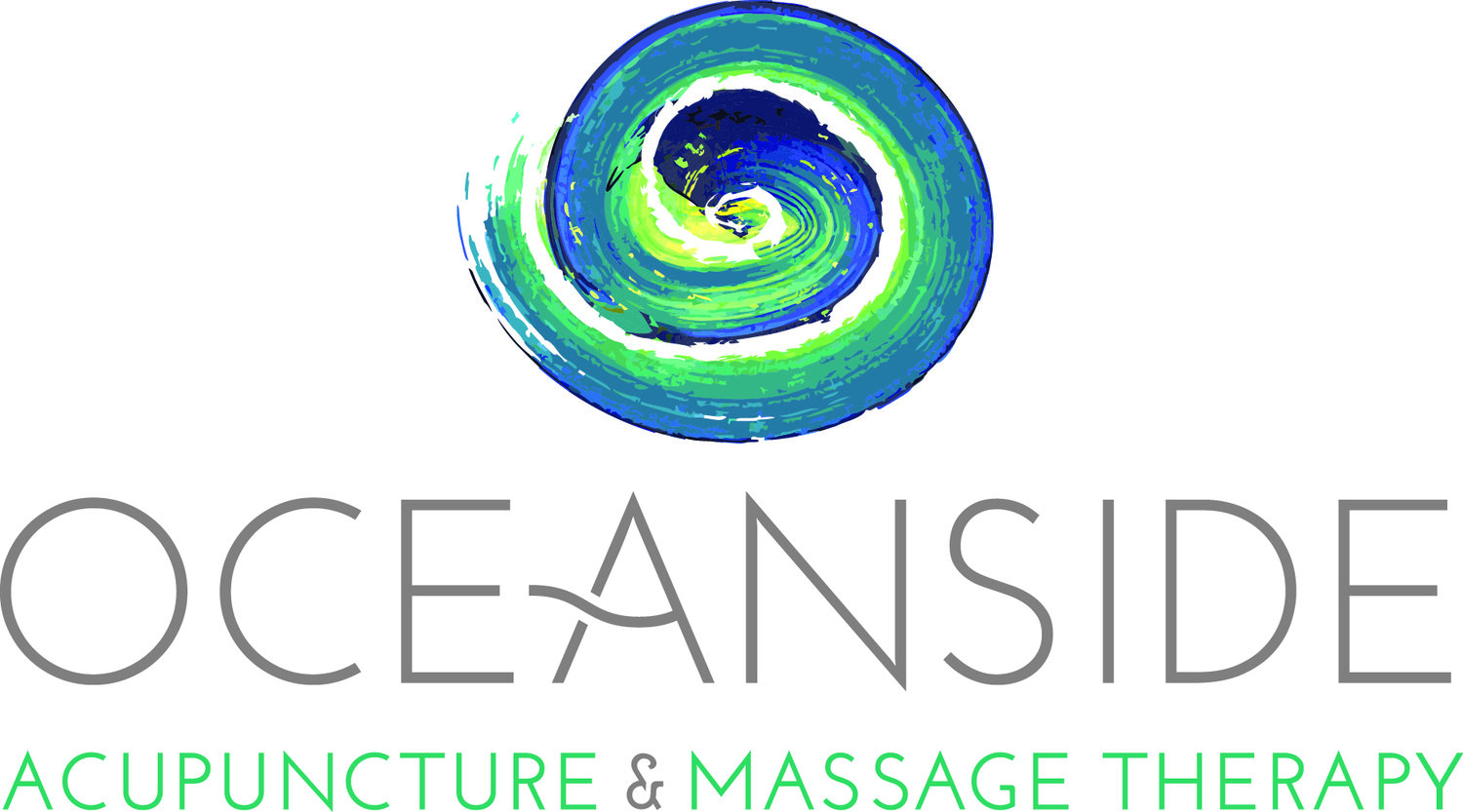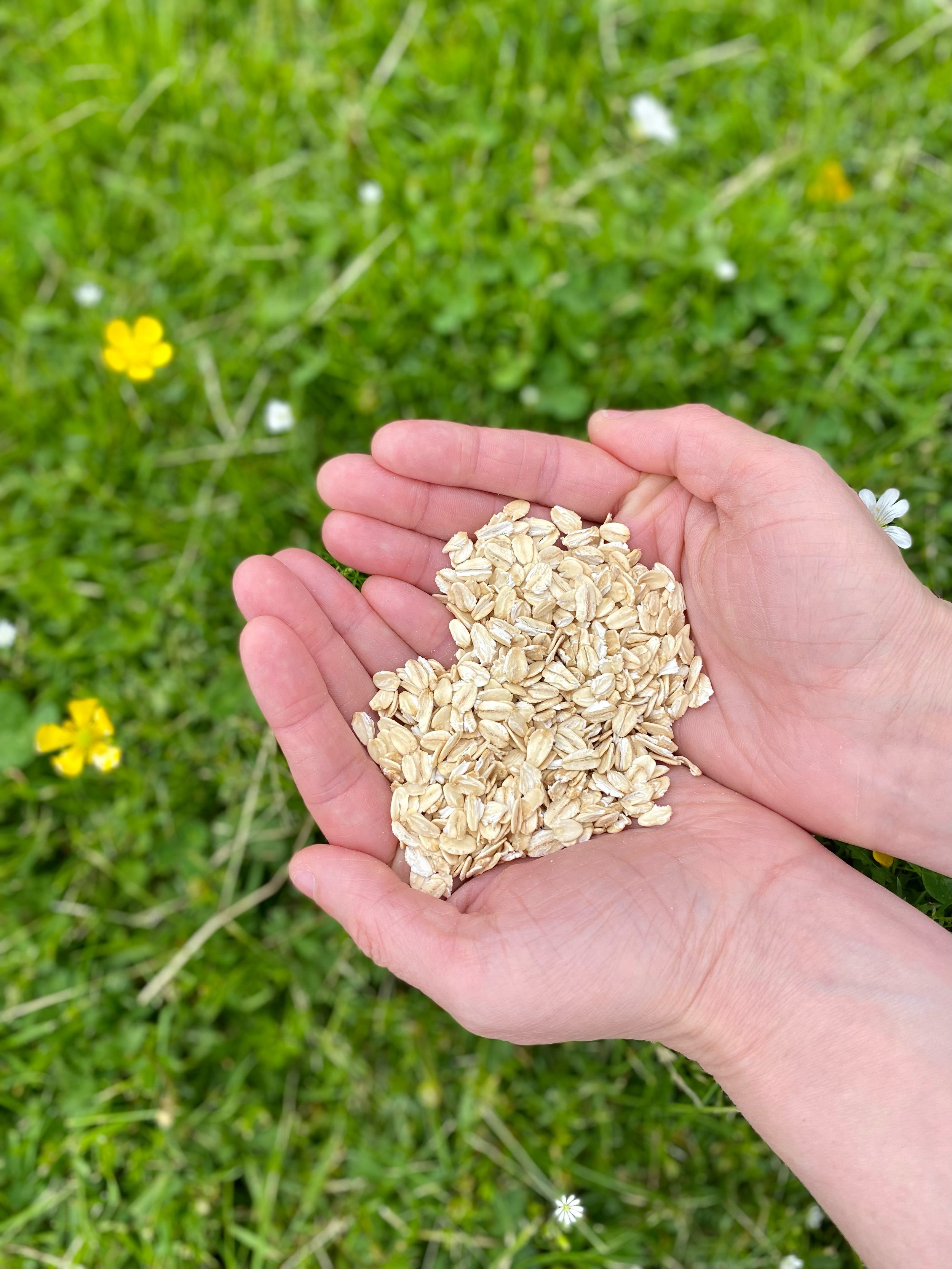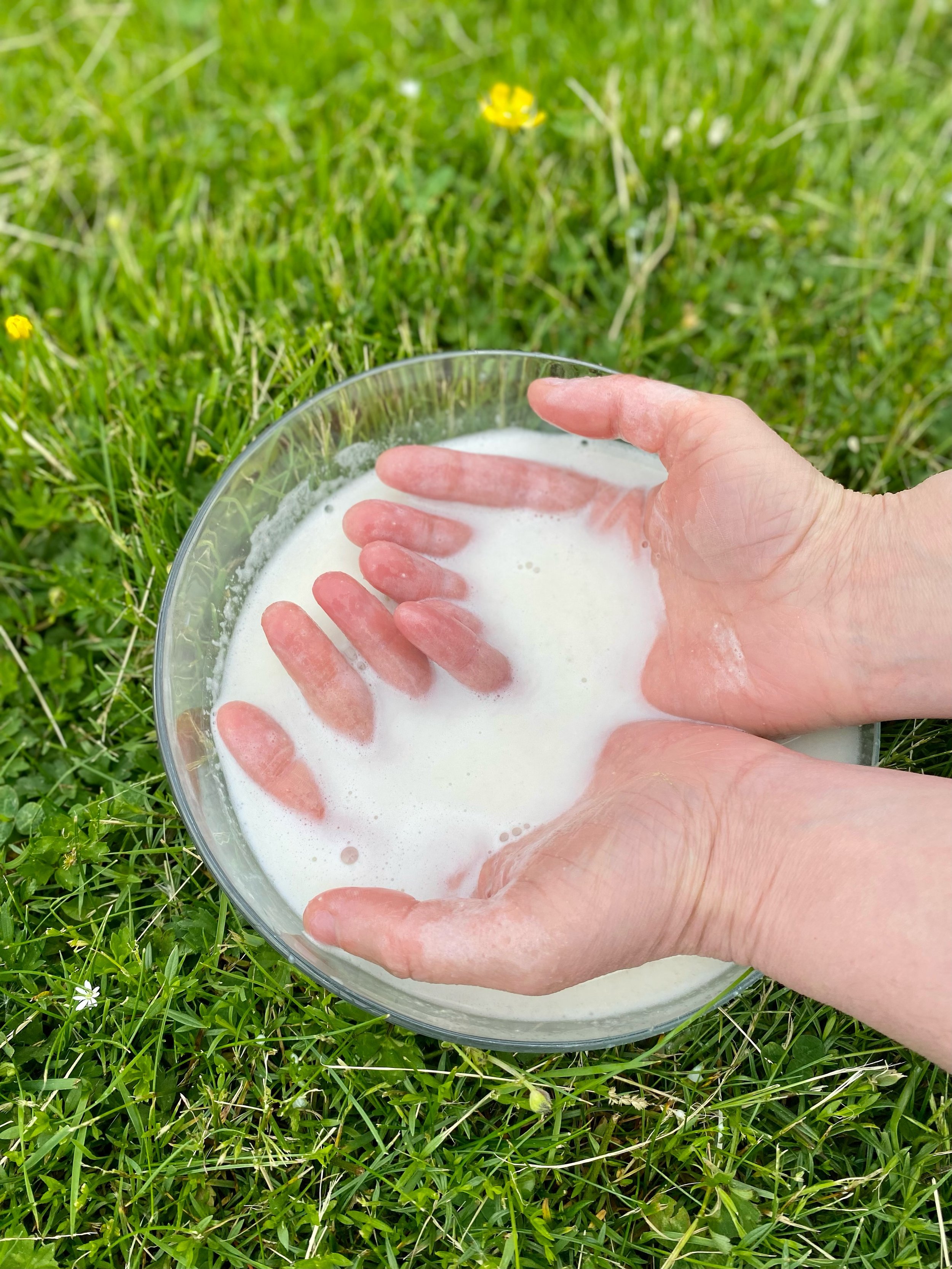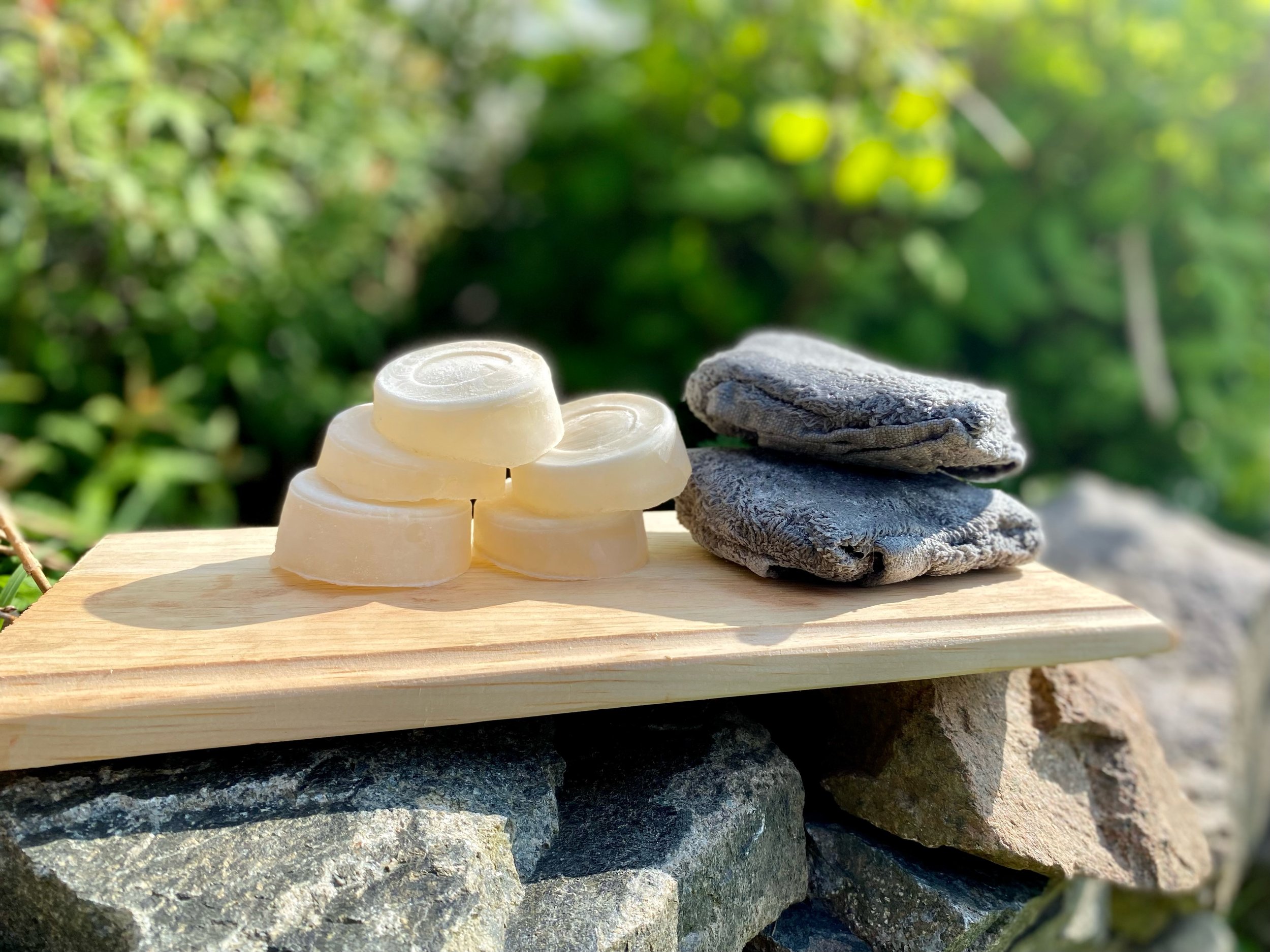We are starting a series on bath additives. Simple everyday ingredients to boost your self-care regime. Simple is good! Uncomplicated, easy ways to improve some common issues.
Colloidal oatmeal is a fantastic bath additive and treatment for itchy, dry or inflamed skin. Oatmeal that is finely ground and mixed with water works as an emollient and skin protectant. It is also an anti-inflammatory and antioxidant treatment for the skin. It is nourishing, soothing and moisturizing thanks to the high concentration of beta-glucan. There is a low chance of adverse reactions, as long as you are not allergic to oats. If you are sensitive to gluten, be sure to only buy gluten free oats. Colloidal oatmeal is a common and widely used skincare ingredient, and for good reason, it works!
Colloidal oatmeal is safe for babies and young children. Oatmeal baths are great for irritated dry skin, eczema and diaper rash. Colloidal oatmeal is naturally gently cleansing, and can be used as a soap alternative for very sensitive and reactive baby skin.
The easiest way to use colloidal oatmeal is to buy packets of it from the pharmacy. It is an extremely finely ground, standardized formula that disperses easily in water and won't clog your drains. I love it, and recommend always having a box on hand. However, if you have an itch that needs treatment and don't want to run out to the pharmacy, here is an easy DIY option. Simple, safe, effective.
Making DIY colloidal oatmeal is nothing new. Most recipes online have you grind oats in a coffee grinder or spice mill into a flour texture. However, that technique doesn't work for me. Too gritty, you don't get the nice silky smooth texture, and it makes a mess of your bathtub. Plus the extra step of cleaning out your coffee grinder. There is a better way, using a regular blender, oats and water.
How to make colloidal oatmeal - the easy way!
1) Add 1/2 cup of oats to a blender, fill the blender half way with water.
2) Blend on high, then let sit for 10 minutes to hydrate the oats and then blend a second time.
3) Strain mixture through a fine mesh strainer, some cheese cloth or a kitchen towel. Keep the lovely silky oat liquid and compost any oat solids you starined out.
4) Use oat water immediately or store in fridge for a few days.
Straining the oat water.
How to use oat water
(homemade or store bought colloidal oatmeal mixed with water)
add homemade oat water (or store bought powder) to bath water, soak 15-20 minutes or more, no need to rinse
apply oat water directly to affected skin like a toner, no need to rinse
don't like baths? Use oat water in the shower! Apply with a cloth or luffa, let sit on skin for a few minutes and rinse off
freeze oat water in an ice cube tray, and use 'oat ice cubes' to treat bug bites, poison ivy, or any type of skin itch. A summertime necessity!
for a no drip option, soak face clothes in oat water and freeze, for a fantastic cold compress to soothe itch, or depuff under eyes
mix store bought colloidal oatmeal powder with enough water to form a paste, apply as a mask to irritated skin or bug bites, let dry then gently wash off
It is simple to use colloidal oatmeal and simple is good! Let us know, what is your favorite way to use colloidal oatmeal?
Silky smooth colloidal oatmeal texture you are aiming for.
Colloidal oatmeal ice cubes & frozen washcloths.
References:
Kurtz ES, Wallo W. Colloidal oatmeal: history, chemistry and clinical properties. J Drugs Dermatol. 2007 Feb;6(2):167-70. PMID: 17373175.
Reynertson KA, Garay M, Nebus J, Chon S, Kaur S, Mahmood K, Kizoulis M, Southall MD. Anti-inflammatory activities of colloidal oatmeal (Avena sativa) contribute to the effectiveness of oats in treatment of itch associated with dry, irritated skin. J Drugs Dermatol. 2015 Jan;14(1):43-8. PMID: 25607907.
This article is for informational purposes only, it is not intended to be medical advice. Always see your medical provider to diagnose or treat skin conditions.




